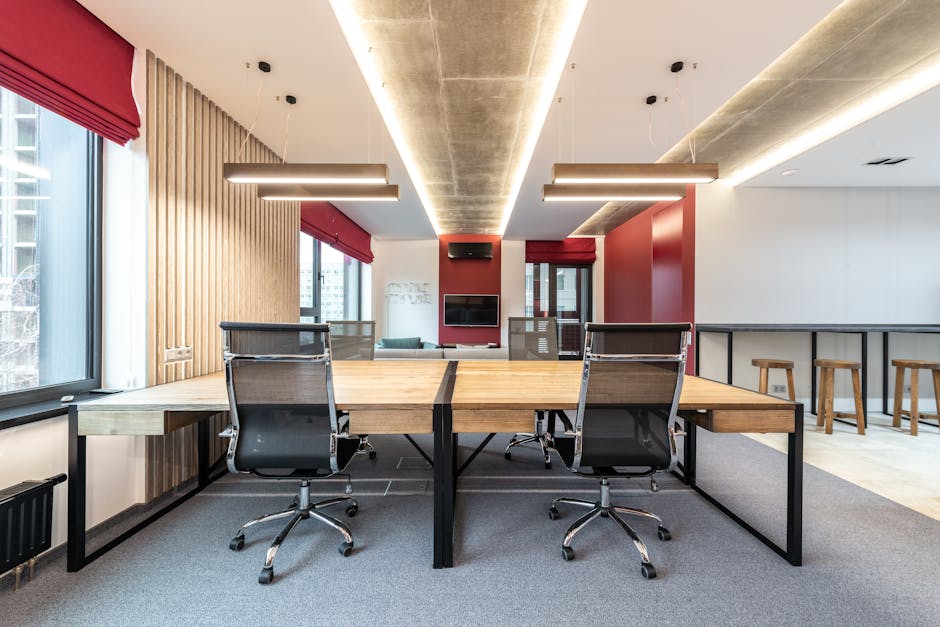Lost in the Labyrinth: Navigating the Challenges of Office Wayfinding
“Discover the humorous yet frustrating experiences of employees getting lost in unfamiliar office spaces. This article explores common wayfinding challenges, their impact on productivity, and innovative solutions to help organizations create more navigable work environments. ”

Lost in the Labyrinth: Navigating the Challenges of Office Wayfinding
In today's dynamic workplace, the ability to navigate office spaces efficiently is more crucial than ever. Yet, for many employees, finding their way around unfamiliar office layouts can feel like traversing a complex maze. This article delves into the common challenges of office wayfinding, sharing embarrassing moments, exploring current solutions, and suggesting innovative approaches to make the workplace more navigable.

The Embarrassing Reality of Getting Lost at Work
We've all been there – that moment of panic when you realize you're completely lost in your own office building. Here are some of the most cringe-worthy scenarios employees have faced:
-
The Endless Loop: Picture this: you ask a colleague for directions to a conference room, only to find yourself doing laps around the floor, unable to locate your destination. The cherry on top? Making awkward eye contact with the person who gave you directions.
-
The Executive Encounter: Imagine having to interrupt a group of executives mid-conversation because you're hopelessly lost. It's a surefire way to make a lasting impression – though perhaps not the one you'd hoped for.
-
The New Guy's Nightmare: Even after months on the job, some employees still struggle to navigate their office layout. It's particularly embarrassing when you work for a small company with just one floor!
-
The Hangry Wanderer: One employee shared their hour-long quest to find the cafeteria in a massive corporate office, only to settle for a vending machine lunch after being led back to their desk by kind strangers.
These stories highlight a common thread: the lack of clear, accessible office floor plans can lead to frustration, wasted time, and even social anxiety.
The Ripple Effect of Poor Wayfinding
The impact of inadequate office navigation extends beyond individual embarrassment. It can have significant consequences for productivity and workplace dynamics:
-
Productivity Loss: Time spent wandering halls or searching for meeting rooms is time not spent on actual work.
-
Increased Stress: The anxiety of potentially being late or interrupting others can add unnecessary stress to the workday.
-
Strained Relationships: Employees who frequently ask for directions may inadvertently annoy their colleagues, particularly those seated near high-traffic areas.

Current Approaches to Office Wayfinding
Organizations have attempted various methods to address wayfinding challenges:
-
Taped-up Floor Plans: While better than nothing, these often look unprofessional and may not be regularly updated.
-
Intranet-based Maps: These can be helpful but are often buried in hard-to-navigate systems.
-
Designer-created Layouts: While visually appealing, these may lack accuracy or be difficult to update.
-
Emergency Exit Plans: These engineering drawings are often too complex for everyday use.
-
No Solution at All: Surprisingly, many organizations leave employees to fend for themselves entirely.
Innovative Solutions for Better Office Navigation
To address these challenges, companies are turning to more sophisticated solutions:
-
Interactive Digital Maps: Implementing user-friendly, digital office maps that can be easily accessed via smartphones or workstations.
-
QR Code Wayfinding: Placing QR codes throughout the office that, when scanned, provide instant directions to specific locations.
-
AI-powered Navigation Apps: Developing custom apps that use artificial intelligence to guide employees through complex office layouts.
-
Smart Signage: Installing digital signs that update in real-time to reflect changes in office layout or meeting room assignments.
-
Visitor sign-in apps: Integrating wayfinding features into visitor management systems to help both employees and guests navigate the office space.

Implementing Effective Wayfinding Strategies
To create a more navigable workplace, consider the following steps:
-
Conduct a Wayfinding Audit: Assess your current office layout and identify common pain points in navigation.
-
Involve Employees: Gather feedback from staff about their experiences and suggestions for improvement.
-
Invest in Technology: Choose a wayfinding solution that integrates with your existing workplace management tools.
-
Prioritize User Experience: Ensure that any implemented solution is intuitive and easy to use for all employees, regardless of tech-savviness.
-
Regular Updates: Keep your wayfinding system current by updating it whenever changes occur in the office layout.
The Future of Office Navigation
As workplaces continue to evolve, particularly with the rise of hybrid work strategies, effective wayfinding will become increasingly important. The ability to navigate office spaces efficiently will not only enhance productivity but also contribute to a more positive and less stressful work environment.
By addressing the challenges of office wayfinding head-on, organizations can create spaces that are not only functional but also welcoming and easy to navigate. This approach not only benefits employees but also leaves a positive impression on visitors and clients, ultimately contributing to a more efficient and harmonious workplace.
Remember, a well-navigated office is a productive office. By investing in smart wayfinding solutions, you're not just preventing embarrassing moments – you're paving the way for a more connected, efficient, and enjoyable work environment for everyone.